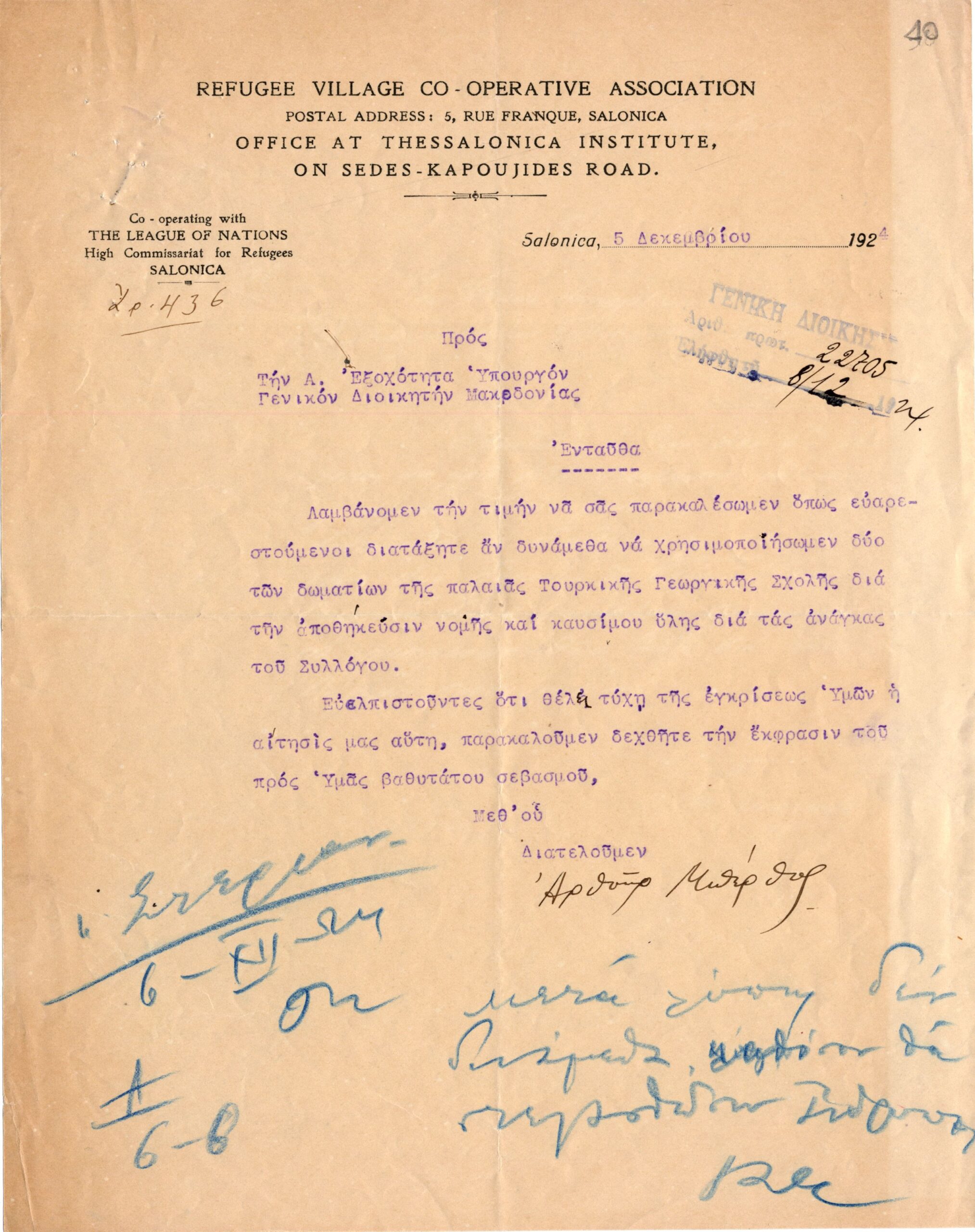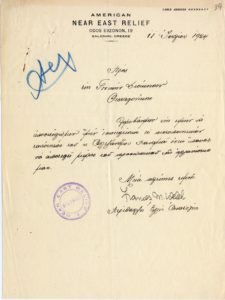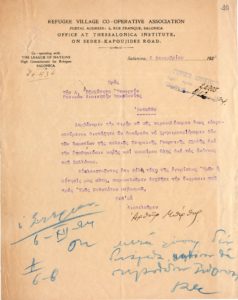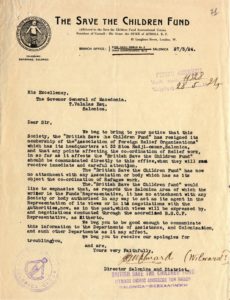American organisations in Thessaloniki
City
Migration Period
Category
Full Description
The task of providing relief to the refugees of Thessaloniki and ensuring their rehabilitation was extremely challenging. The city was facing an acute housing crisis, as it received a huge number of refugees who either settled there permanently or were passing through on their way to the mainland, while most of its infrastructure had been out of commission since the Great Fire of 1917. State and public services were by no means prepared to provide the necessary relief and had to be assisted by numerous organisations and individuals both from Greece and abroad. This assistance continued even after the establishment of the Refugee Settlement Commission in September 1923.
Among the foreign charity organisations which assisted in relief efforts, many were British, such as the British Red Cross, the British Aid Committee, the Imperial War Relief Fund and the Save the Children Fund (which after the refugee movement of 2015 became active in the area once again under the name ‘Save the Children’).
However, it was the American organizations that were by far the most active in Thessaloniki, Macedonia and the rest of Greece for a variety of reasons, ranging from the American foreign and economic policy in Greece and the Near East to the strong tradition of charity and volunteerism characterising both the American progressive movements (such as the women’s movement) and the American churches and religious denominations.
The American Red Cross was active in Greece from 1918 to 1922, returning in October 1922 to collaborate closely with local associations and the Welfare Directorate. In Thessaloniki, it organised clinics inside the refugee settlements and participated in the vaccination drive to inoculate refugees. The organisation distributed blankets, clothes and children’s underwear, while also undertaking the massive task of providing food to tens of thousands of refugees on a daily basis.
Another important American organisation was the American Women’s Hospitals, which was active in Athens, Piraeus and Makronisos.[1] In Thessaloniki, the organisation established the Theageneio Hospital, initially a maternity clinic which soon expanded to include a general pathology department, as well as a pediatrics department to care for women and children.
American Near East Relief was established in 1919 on the initiative of Henry Morghentau, who would later become president of the Refugee Settlement Commission. Its main objective was caring for orphaned Christian children in the Near East region. In Thessaloniki, the organisation, in collaboration with the Municipality of Thessaloniki and local foundations, worked on promoting orphan welfare, but also provided clothing assistance and contributed significantly to certain administrative processes concerning adult refugees. From 1928 onwards, the organisation contributed to the agricultural education of young refugees and the vocational training of rural communities.
One of the items presented here is a letter from the organisation Refugee Village Co-operative Association, on which we could find no further information. The organisation had its headquarters on Fragkon Street and kept an office at Thessalonica Institute on Thermis-Pylaias Street. According to the organisation’s letterhead, it operated in collaboration with the League of Nations High Commissioner for Refugees, an organisation established in 1921 under the leadership of Fridtjof Nansen, a Norwegian explorer, scientist and politician, and a prominent figure behind the Lausanne Treaty.
The strong presence of American organisations in Thessaloniki during the first quarter of the 20th century is also indicated by the establishment of three educational foundations which contributed to the welfare and education of refugees in Thessaloniki and the rest of Macedonia and continue to operate to this day. These are the American Farm School, established in 1904, the Thessaloniki YMCA, established in 1921, and the Anatolia American College of Thessaloniki, which opened in Thessaloniki in 1924. [2]
[1]Follow this link for photographs from the organisation’s archive documenting its activities in Greece. https://idea.library.drexel.edu/islandora/object/lca%3A12209
[2] Anatolia College had been operating in Merzifounta (Merzifon), Pontus, since 1886. The Turkish government closed the school down in 1921.
Bibliography
Eleni Ioannidou and Maria Kavala, ‘Aid and rehabilitation for the 1922 refugees in Interwar Thessaloniki. Aspects of the activities of non-governmental collective entities’, in Sokratis Petmezas et al. (eds.), Theoretical queries and empirical studies. Proceedings of International Conference on Economic and Social History, Rethymno, 10-13.12.2008, University of Crete Department of Philology Publications, Alexandreia, Athens 2012, pp. 345-374.



